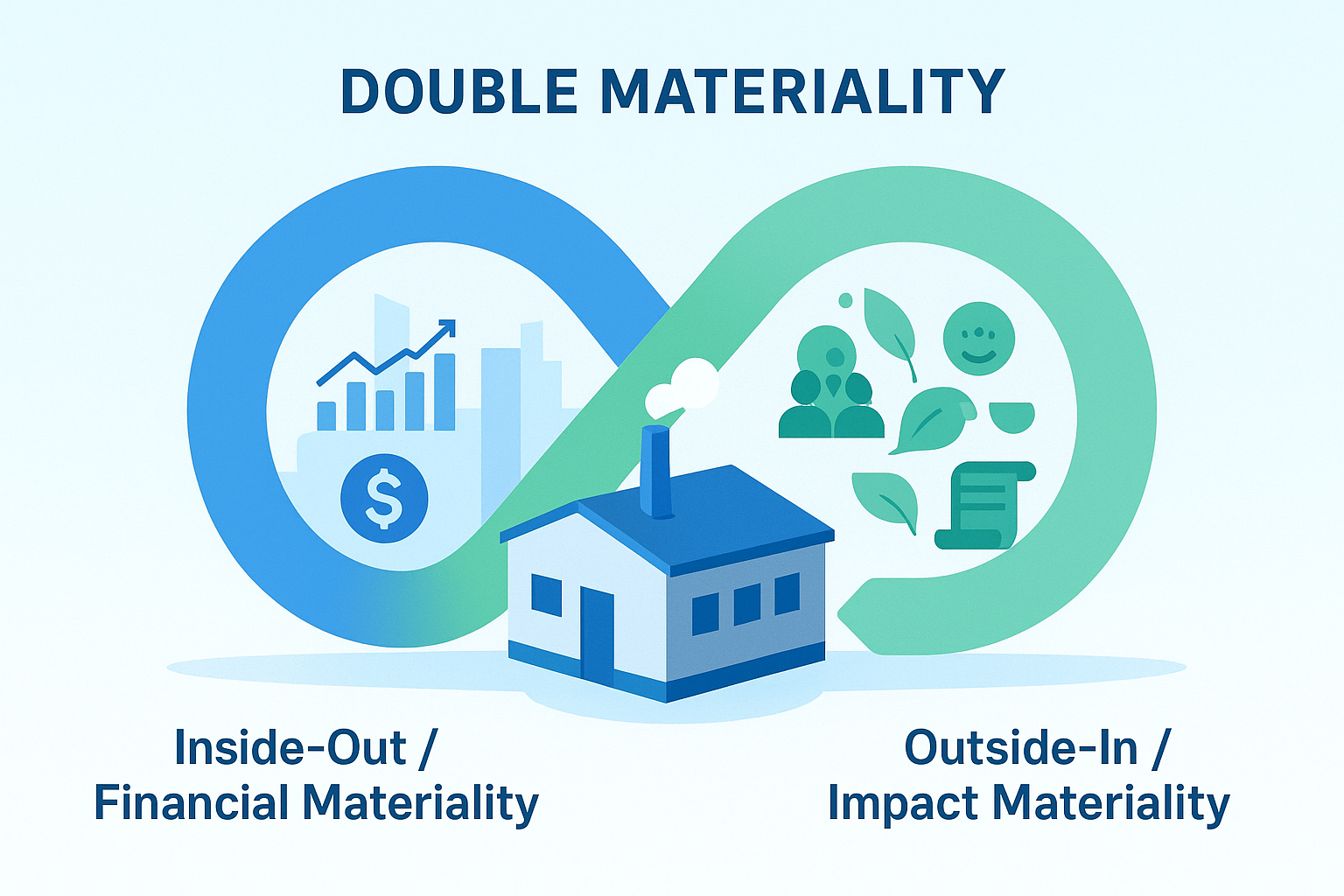Why Materiality Matters in ESG Strategy
Moving Beyond Single Materiality
As a sustainability professional—and someone who shares the eco-anxiety of my generation—I find the single materiality approach outdated. Traditionally, materiality meant identifying “relevant topics that could have a significant financial effect” on a company. In other words, non-financial issues only mattered if they had the potential to impact the balance sheet.
This perspective is no longer enough.
The Case for Double Materiality
Double materiality expands the view by considering not only how environmental, social, and regulatory issues affect the company, but also how the company itself impacts nature and society.
From my perspective, almost every topic is “material” in some way—whether directly or indirectly—for the company, the planet, or society. At the same time, businesses must make the best use of limited resources (time, money, talent). That’s why prioritization is critical when designing ESG strategies and reporting frameworks.
From Analysis to Actionable ESG Roadmaps
My approach is to run a comprehensive assessment across ESG topics, then help companies focus on a targeted list of short- and mid-term actions. This ensures that sustainability strategies are both ambitious and practical—delivering measurable impact without overwhelming teams.
Carbon Footprint Management: A Practical Example
The same logic applies to carbon footprint management. According to the GHG Protocol principles of transparency, consistency, and completeness, the first step is to examine every sub-category of Scope 1, 2, and 3 emissions.
Even data gaps provide valuable insight: they reveal emission sources the company has not yet tracked or documented. From there, depending on the company’s maturity, size, industry, and geography, we identify a small number of high-impact Scope 3 categories that can deliver meaningful reductions in the near term.
For example:
Year 1: The company launches reduction initiatives in four prioritized sub-categories, while starting to track missing data.
Year 2: Progress is measured on the original categories, while additional Scope 3 emissions are calculated and integrated into the total footprint.
This approach helps companies avoid the paralysis of complexity and start improving sooner rather than later.
Prioritization Without Ignoring the Bigger Picture
In short, I value the prioritization aspect of materiality—but only when it serves as a roadmap toward addressing currently “immaterial” ESG topics and emission activities. All organizations are interconnected through society and the environment, which means that no issue can remain irrelevant forever.
By combining double materiality, ESG prioritization, and practical carbon management, companies can move from confusion to clarity—and from isolated efforts to systemic impact.


